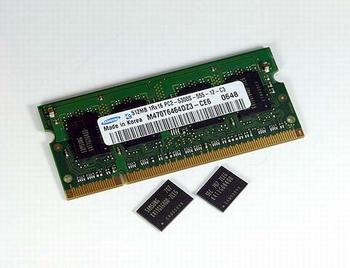 SanDisk recently stated that it is working with Toshiba to expand the second phase of the No. 5 semiconductor manufacturing facility (Fab 5) in Yokkaichi, Mie Prefecture, Japan, and jointly develop 3D NAND memory technology for the 2D NAND Flash memory system. Cheng will face a miniaturized bottleneck at the 10 nm node and prepare for it.
SanDisk recently stated that it is working with Toshiba to expand the second phase of the No. 5 semiconductor manufacturing facility (Fab 5) in Yokkaichi, Mie Prefecture, Japan, and jointly develop 3D NAND memory technology for the 2D NAND Flash memory system. Cheng will face a miniaturized bottleneck at the 10 nm node and prepare for it. Wu Jiarong, vice president of SanDisk Asia Pacific, said that SanDisk has indeed invested in 3D NAND memory technology research and development with Toshiba's joint venture No. 5 semiconductor plant, and actively took the lead in the market.
Wu Jiarong, vice president of SanDisk Asia Pacific, said that as the proportion of smart phones, tablet devices and ultrabooks equipped with NAND Flash and solid-state hard disk (SSD) continues to increase, the NAND Flash memory market will continue to be in short supply, thus attracting NAND Flash suppliers have been investing in expanding production in order to alleviate the tight supply.
Wu Jiarong further pointed out that the company’s joint venture with Toshiba’s No. 5 semiconductor manufacturing plant is about to start its second-phase expansion plan. It will continue to adopt the most advanced 19-nanometer process technology and is scheduled to be put into production in the second half of 2014. In addition, SanDisk also The 3D NAND technology will be developed through this factory.
It is understood that the second phase expansion of the No. 5 semiconductor manufacturing plant will introduce a 19-nm process to produce 2D NAND Flash memory; on the other hand, it will adopt a BiCS (Bit Cost Scalable) technology to produce 3D NAND memory. The technology boasts the advantages of high performance, low cost, and architecture scalability. It was previously published by Toshiba, and SanDisk has planned to use this technology to produce 3D NAND flash memory products, which are expected to be put into production in 2016. The first 3D NAND memory.
Whether SanDisk will use 3D NAND memory technology to develop processes below 10nm, Wu Jiarong stated that the company is currently unable to explain the process blueprint of 3D NAND memory technology, but predictably, compared to each generation in the past The gap between NAND Flash process nodes is more than 10 nanometers. After entering 19 nanometers, the node spacing of process miniaturization will be significantly reduced.
Obviously, 2D NAND memory technology will soon face development bottlenecks, and 3D NAND memory will become an inevitable way to increase the density of NAND Flash and reduce costs. Therefore, in addition to Toshiba and SanDisk, Samsung, Hynix (Hynix) And IM Flash Technologies has also invested in 3D NAND memory technology layout. Among them, Samsung is scheduled to mass-produce 3D NAND memory in 2014.
Light reflectors in China with resonable price and good quality,We hope to establish cooperative relationship with you.
Light Reflector,Aluminum Light Reflector,Street Light Reflector,Energy Save Light Reflector
Yangzhou Huadong Can Illuminations Mould Manufactory Co., Ltd. , https://www.light-reflectors.com